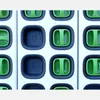In a move to further accelerate the adoption of Electric Vehicles (EV) in the country, the Indian Government has released the third update of the charging guidelines, in line with their multiple stakeholder expectations.
In the recently announced Union Budget 2022-23, India’s Finance Minister Nirmala Sitharaman asserted that the government will be bringing out a battery swapping policy with interoperability standards to help accelerate the adoption of EVs in the country.
Charging infrastructure and swapping infrastructure needs a much-awaited push towards standardisation. Adoption at scale among the larger public can only happen if a consumer can easily plug in or swap their battery at any charging operator station.
Currently, charging technology available for most products in the market, two and three wheelers, is slow charging, your simple geyser plug-point. Fast charging is available to an extent with DC001, a 15-kW point, for products by Euler and Log9 and some proprietary fast charging networks which are product specific, like with Ola and Ather two-wheelers.
Battery swapping networks exist by a few players like Jio BP and Sun Mobility, but their networks are not built out to cater for mass adoption.
Most of the fast-charging stations being built across the country are hyper focused on personal vehicle adoption and are concentrated near large metropolitan areas only, leaving them under-utilised.
One of the key aspects of the new government policy on battery swapping is that of interoperability. It offers the much-needed standardisation across battery design as well as plug design that will allow for compatibility across vehicle form factors.
The lack of charging infrastructure, range anxiety, upfront battery costs, and the time taken to charge a full battery have been some of the key deterrents to EV adoption globally.
Battery swapping provides an easy shortcut for existing fossil fuel-based vehicle users to overcome many of these deterrents by having a fully charged vehicle at the same time as they used to fill their fuel tanks at a petrol bunk and also reduce the upfront cost of the vehicle by purchasing it without a battery.
Battery swapping in smaller vehicle form factors, like two wheelers and electric cycles present a great market fit for India. With a focus on standardising battery interoperability, this market has a huge potential to transform at a faster rate towards every two-wheeler being electric by 2025.
The biggest upfront advantage that users see of battery swapping is its downtime in comparison to plug in charging. An average city commuter travels between 35-70 km/day.
Currently most high-speed electric two-wheelers provide an on-ground range of between 80-120 km, making swapping a great solution for only certain use case scenarios where range requirement per full charge is high and downtime needs to be low, like commercial delivery vehicles.
Existing battery swapping solutions have struggled to get market traction due to a few reasons.
One, OEM and energy operators are not developing products in sync, creating pressure on battery swapping companies to make force fit solutions.
Two, even in cases where leading OEMs and battery swapping solution providers have collaborated, they have come up with under designed solutions which creates more range anxiety and high dependency on having an existing dense swapping station network, which requires high capex due to battery costs.
All of this is leading to lower adoption. However, recently, one of India’s largest swapping players is working directly with an OEM to come up with battery swapping solutions that give the same range as the direct charging options and have shown flexibility and agility to set up battery swapping networks anywhere one requires.
This would increase the adoption in certain use cases where the daily run requirement is 150km+.
Taking the larger picture globally into account, today, lack of developed battery technology and the high upfront cost of batteries leads to less density battery packs giving users range anxiety. This will dramatically change in the next 5 years, leaving one to question if one needs that much range every day per battery pack.
A developed dense battery swapping infrastructure network provides a great advantage to build on a battery-as-a-service business model.
This model allows EV owners to lease batteries from OEMs or other battery swapping solution providers, as India moves towards battery interoperability, not having to pay upfront cost of battery while purchasing. Interoperable swapping infrastructure can lead to accelerated adoption of EVs in India.
The biggest questions in the case of battery-as-a-service business model remain, who owns the battery, how does one focus on optimising battery life if we cannot identify the owner of the battery, tech integration of all battery swap stations, and most importantly, are OEMs, both vehicle and battery manufacturers as well as charging operators ready to be interoperable! Electric mobility is one of the fastest evolving spaces, the next 5 years will truly revolutionise how we move people and goods, globally.
Edited by Affirunisa Kankudti
(Disclaimer: The views and opinions expressed in this article are those of the author and do not necessarily reflect the views of YourStory.)

